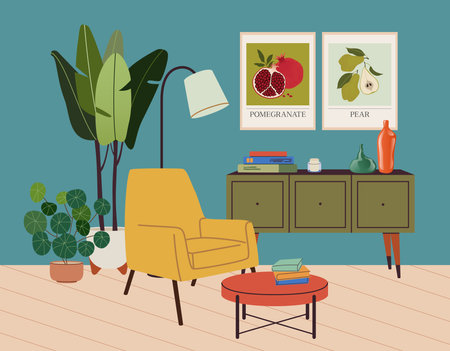1. Understanding Sustainable and Eco-Friendly Design Principles in India
India’s rich heritage and diverse ecosystems make sustainability a unique and essential aspect of any design portfolio. To truly embrace sustainable and eco-friendly design, it is crucial to grasp the foundational concepts within the Indian context. Sustainability in India isn’t just about using green materials—it also involves respecting local traditions, climate responsiveness, and resource efficiency. For generations, Indian communities have incorporated natural ventilation, rainwater harvesting, mud construction, and passive solar techniques into their homes and public spaces. These time-tested methods offer valuable lessons for today’s designers aiming to reduce environmental impact.
Moreover, understanding eco-friendliness means complying with local regulations such as the Energy Conservation Building Code (ECBC) and guidelines set by the Bureau of Indian Standards (BIS). Designers must stay updated on national green building rating systems like GRIHA and IGBC, which encourage practices such as waste minimization, energy efficiency, and water conservation. By integrating traditional wisdom with modern regulatory frameworks, Indian designers can create portfolios that reflect both cultural integrity and environmental responsibility—a key differentiator in the country’s rapidly evolving market.
2. Incorporating Indigenous Materials and Techniques
To truly embed sustainability into your design portfolio in India, it is essential to leverage the rich heritage of indigenous materials and traditional construction techniques. By sourcing locally available, natural resources such as bamboo, jute, and laterite, you not only reduce the embodied energy associated with transportation but also support local economies and craftsmanship. These materials are deeply rooted in Indian culture and have been used for centuries owing to their climate-responsive properties and renewability.
Popular Indigenous Materials in India
| Material | Region of Abundance | Key Sustainable Features |
|---|---|---|
| Bamboo | Northeast, Karnataka, Kerala | Rapidly renewable, lightweight, high tensile strength |
| Jute | West Bengal, Assam, Odisha | Biodegradable, versatile, low water requirement |
| Laterite Stone | Karnataka, Kerala, Maharashtra | Thermal insulation, low carbon footprint, locally quarried |
Sourcing Locally: Practical Steps
- Establish partnerships with local artisans and suppliers who specialise in these materials.
- Conduct site assessments to identify region-specific resources that can be incorporated into your designs.
- Engage with government-supported khadi and village industries for authentic supplies.
Integrating Traditional Techniques
Adopting time-honoured Indian construction methods such as jaali (perforated screens), mud plastering, and lime mortar not only celebrates cultural legacy but also enhances passive cooling, moisture regulation, and longevity of structures. These practices have evolved over generations to suit India’s diverse climatic zones while minimising environmental impact.
Cultural Relevance & Environmental Impact
Incorporating indigenous materials and methods resonates with the ethos of ‘Vasudhaiva Kutumbakam’—the world is one family—by fostering harmony between modern innovation and ancestral wisdom. This approach demonstrates your commitment towards eco-friendly design solutions that are both contextually relevant and globally conscious. By documenting these choices in your portfolio, you showcase a holistic understanding of sustainability that appeals to clients seeking meaningful and responsible architecture in India.

3. Adapting to Indian Climatic and Geographical Diversity
India’s vast landscape spans multiple climatic zones, from the humid coasts of Kerala to the arid deserts of Rajasthan and the chill of Himalayan foothills. For architects and designers aiming to add sustainable and eco-friendly projects to their portfolios, it is essential to understand these regional differences and respond with context-driven solutions. Integrating passive cooling techniques—like strategic orientation, natural cross-ventilation, shaded verandahs, and jaali screens—not only minimises dependence on artificial air conditioning but also honours traditional design wisdom rooted in India’s heritage.
Integrating Rainwater Harvesting Systems
Rainwater harvesting is a vital strategy for water conservation across urban and rural India. By designing sloped roofs, percolation pits, and storage tanks that are suited for local rainfall patterns, you can reduce a building’s reliance on municipal water while supporting water security at the neighbourhood level. This practice is especially crucial in regions prone to drought or irregular monsoons, as it aligns with both environmental responsibility and government policies encouraging sustainable resource use.
Vernacular Architecture: Blending Tradition with Innovation
India has a rich tradition of vernacular architecture that naturally responds to local climates—think mud houses in Madhya Pradesh for thermal comfort or thick stone walls in Rajasthan against heat. By reviving and adapting these time-tested materials and construction methods with modern engineering solutions—such as stabilised earth blocks or double-layered roofing—you can achieve high-performance sustainability while celebrating India’s cultural diversity. Adding such regionally relevant projects to your portfolio showcases your sensitivity towards both environment and heritage.
Reducing Environmental Footprint Through Local Solutions
Ultimately, embedding climate-responsive design strategies tailored to India’s diverse landscapes not only reduces the environmental footprint but also creates buildings that are comfortable, resilient, and cost-effective. Demonstrate these approaches in your portfolio by highlighting case studies where you have combined passive cooling, rainwater harvesting, and indigenous architectural elements to deliver projects that truly belong to their place.
4. Showcasing Green Certifications and Standards
In the Indian context, highlighting your expertise in sustainable design involves more than just innovative ideas—it requires demonstrating compliance with recognized eco-certifications. By including both Indian and international green building certifications in your portfolio, you can showcase your commitment to environmentally responsible practices and appeal to clients who prioritise sustainability.
Key Green Certifications for Indian Projects
India has developed its own set of comprehensive standards tailored to local climatic conditions and cultural needs. Among the most respected are GRIHA (Green Rating for Integrated Habitat Assessment) and IGBC (Indian Green Building Council). International certifications such as LEED (Leadership in Energy and Environmental Design) also hold value, especially for multinational projects. Including these certifications in your portfolio communicates a strong command of green architecture and design principles.
Comparison of Popular Eco-Certifications
| Certification | Origin | Focus Areas | Relevance in India |
|---|---|---|---|
| GRIHA | India | Energy efficiency, water conservation, waste management, local materials | Highly relevant; widely adopted for government and private projects |
| IGBC | India | Sustainable site selection, water & energy efficiency, indoor environmental quality | Preferred by leading developers and corporations in India |
| LEED | International (USGBC) | Sustainable sites, water savings, energy, materials & resources, indoor quality | Valued for global collaborations and multinational projects in metros |
How to Integrate Certifications into Your Portfolio
For each project included in your portfolio, clearly mention the specific green certification achieved or targeted. Use project summaries to detail which criteria were met—such as use of renewable energy systems, rainwater harvesting, or low-emission materials. Where possible, include excerpts from official rating documents or scorecards. This not only builds trust but also positions you as an expert in implementing world-class eco-friendly solutions tailored for India’s unique requirements.
5. Presenting Community-Centric and Inclusive Projects
When curating a sustainable and eco-friendly design portfolio in India, it is crucial to highlight projects that are rooted in community needs and inclusivity. These projects demonstrate your commitment not only to environmental responsibility but also to social equity and cultural sensitivity. India’s vast diversity demands design solutions that cater to different languages, traditions, and economic backgrounds. By featuring community-centric initiatives—such as affordable green housing, solar-powered rural schools, or rainwater harvesting systems for villages—you showcase your ability to create designs that improve everyday life and empower local populations.
Respecting Diversity Across Regions
India is a land of many cultures, each with unique requirements and aspirations. Ensure your portfolio reflects this by including projects from various states or regions, showing how you adapt sustainable practices to local conditions. For example, use bamboo construction in the North-East, earth architecture in Rajasthan, or recycled materials in urban Maharashtra. This approach highlights your respect for local resources and traditional wisdom while integrating modern eco-friendly technologies.
Engagement and Collaboration
Describe how you have collaborated with local artisans, government bodies, or NGOs to ensure that your sustainable designs are both practical and accepted by the community. Emphasise participatory design processes where community members contribute ideas, ensuring ownership and long-term success of the project. This collaborative spirit is highly valued in Indian contexts and demonstrates your holistic approach to sustainability.
Documenting Social Impact
Include measurable outcomes where possible—such as the number of households benefitted, water saved annually, or employment generated for women’s self-help groups. Testimonials from beneficiaries or stakeholders can add authenticity and credibility to your portfolio.
By presenting inclusive, community-focused projects that respect India’s social fabric, you illustrate your dedication to sustainable development tailored to India’s rich diversity—making your portfolio stand out among conscious designers.
6. Visual Storytelling with Before-After Case Studies
In India’s diverse and evolving design landscape, visually communicating the impact of sustainable choices is essential for building trust and credibility. To effectively showcase your eco-friendly projects, integrate before-and-after case studies in your portfolio. Use high-resolution images, hand-drawn sketches, or 3D renderings that clearly demonstrate the transformation brought about by your sustainable interventions. For example, you might display how a traditional Kerala home was retrofitted with passive cooling strategies, or how a Mumbai office was redesigned to use locally sourced materials and reduce energy consumption.
Leverage Data-Driven Narratives
Pair visuals with concise data points that highlight measurable improvements—such as percentage reductions in water usage, embodied carbon, or electricity bills after implementing your design. This not only adds technical depth but also aligns with Indian clients’ increasing preference for evidence-based decision-making. Use easy-to-understand infographics or tables to present your outcomes, making complex engineering optimisations accessible even to non-technical stakeholders.
Culturally Relevant Context
Contextualise each case study by referencing local challenges and solutions relevant to Indian communities. Highlight how you incorporated vernacular architectural elements, indigenous materials like bamboo or jute, or traditional courtyard planning to enhance sustainability. Narrate the journey—from identifying the problem to deploying innovative solutions—that respects India’s climate zones and social fabric.
Building an Impactful Portfolio
Ultimately, integrating compelling visuals and authentic stories will make your portfolio stand out in the Indian market. By demonstrating real-world results and cultural sensitivity through clear before-and-after comparisons, you inspire confidence in prospective clients and position yourself as a forward-thinking designer committed to sustainable progress in India.

